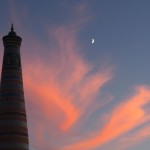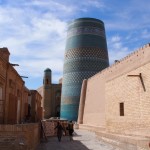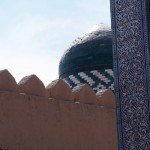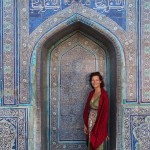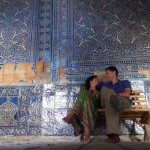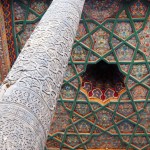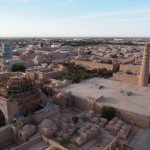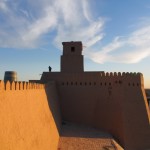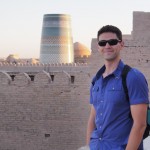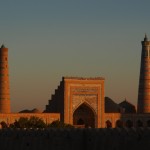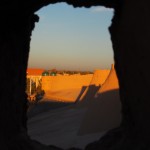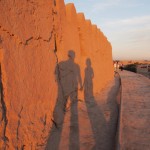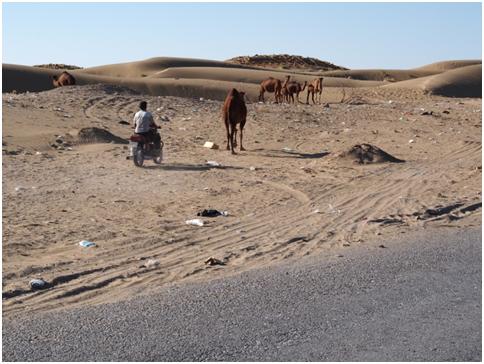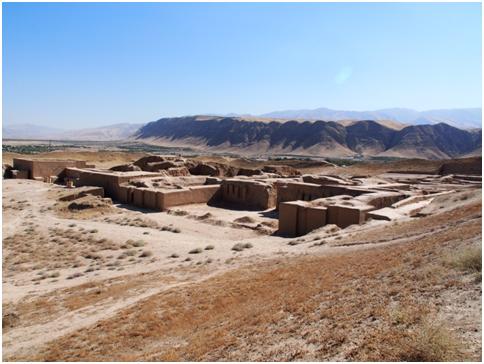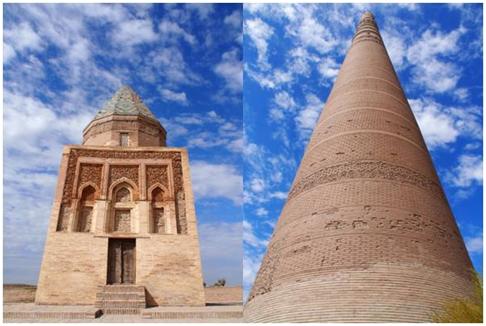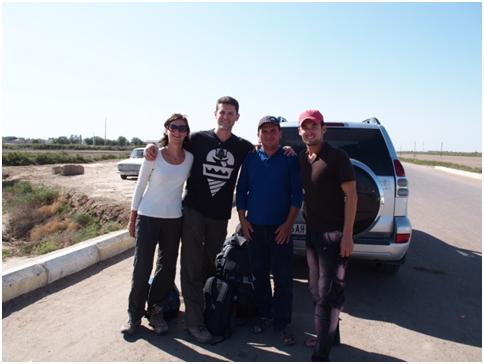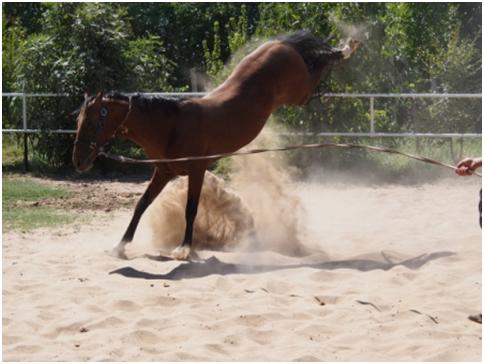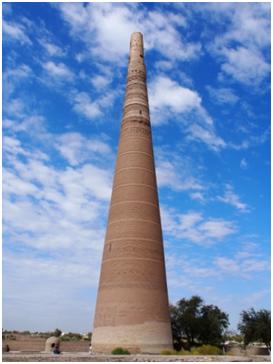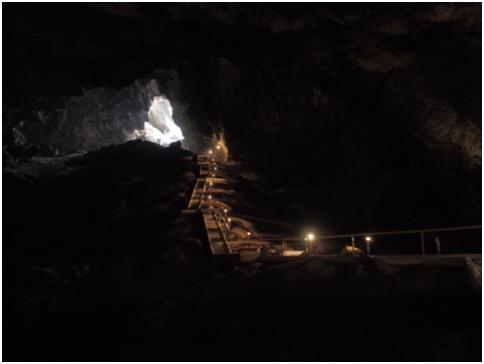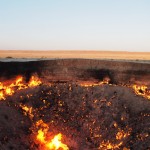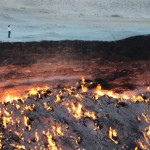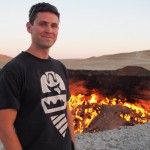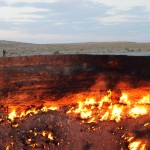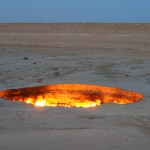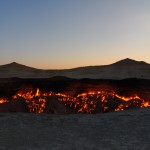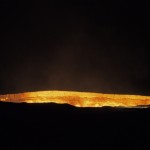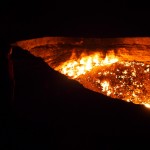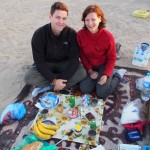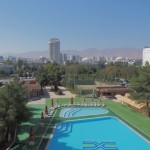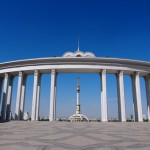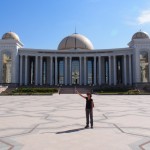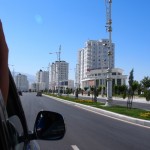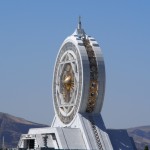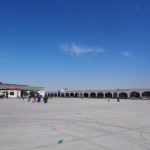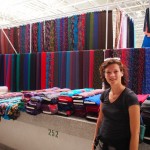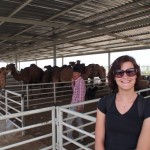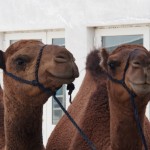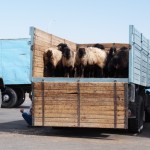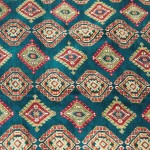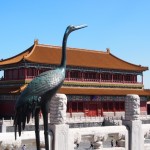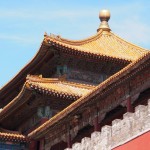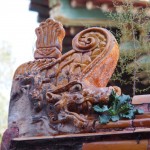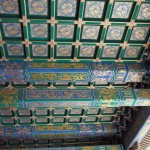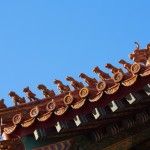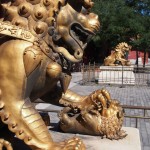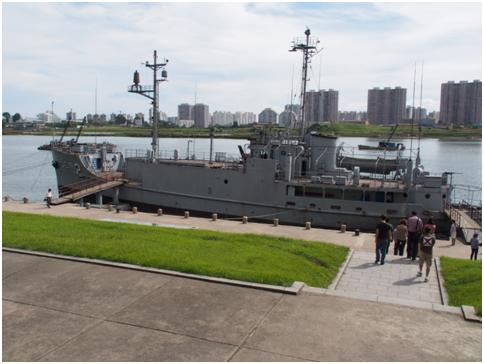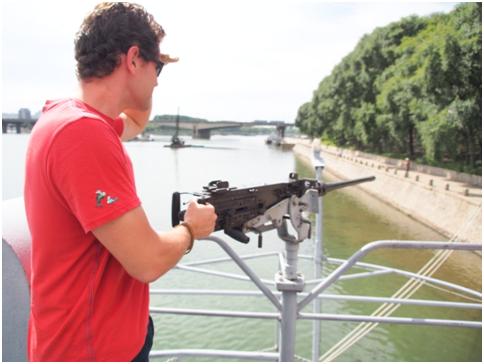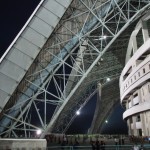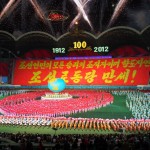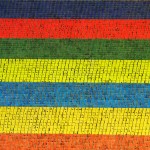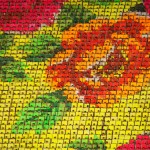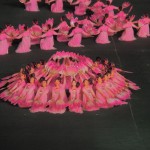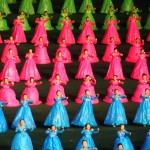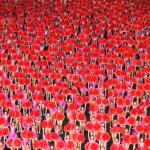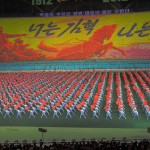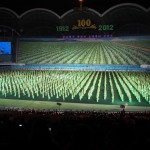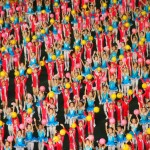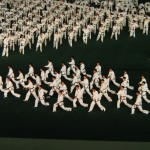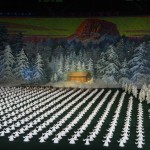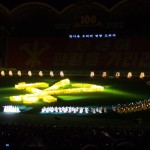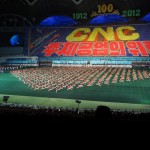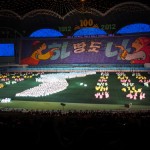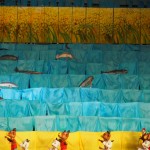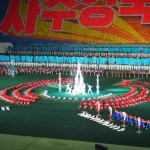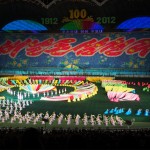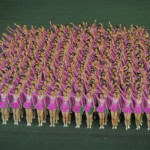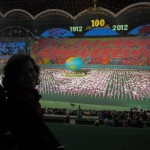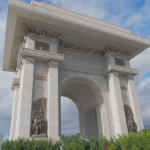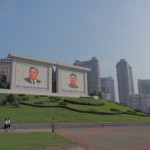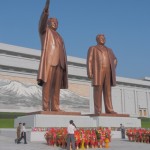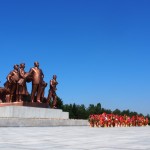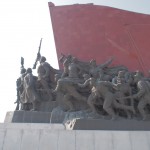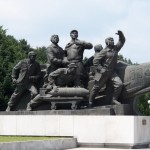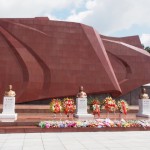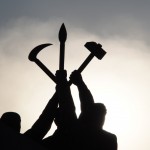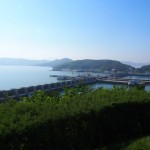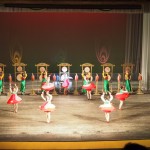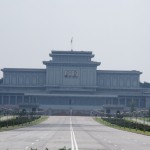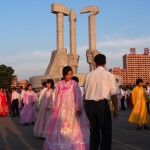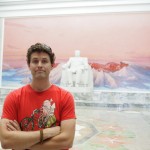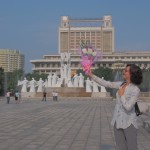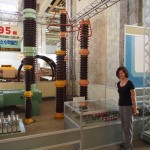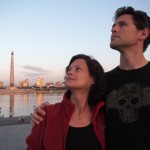Sometimes when you travel, every now and again and only if you’re lucky, you find that you have … a moment. Circumstances combine in some weird way that puts you in the perfect place at the perfect time to get just a particularly … well, perfect mental snapshot of a place and time. And if you’re really lucky, your idealized vision isn’t then too hard hit by subsequent travel hassle experience so you get to hang onto it.
All of which happened to me in Khiva. Khiva is probably the least famous of the Silk Road Big 3, and faces some criticism for having being restored too pristinely, if you will – the Old Town is often accused of being like a museum rather than a living town, so our expectations weren’t actually that high. Plus when we arrived, James came down with a slight bug and promptly fell into a pretty deep sleep (at 5pm), leaving me to wander the town. Which is how I ended up walking through Khiva’s ancient alleys, as the sun set over the minarets and the moon rose into a perfect sickle, with the muezzin calling the faithful to prayer and the faint smell of woodsmoke and shashlyk in the air. If anyone out there ever wants to create a multi-sensory Silk Road experience, this is definitely the place to start!
The next day, with James back to full strength, was our first taste of the Silk Road proper. Mesmerisingly beautiful sites, history and romance coming out your ears (in the next installment of an occasional comment on modern restoration, to me Khiva gets it right. Sure, the whole old city has been made to look “in keeping”, but actually this style of mud-walled building is pretty common over the region which is why the modern stuff ends up being able to blend in, despite addition of satellite dishes and double glazed windows. Plus more importantly to me, the charm of the place has been retained, and in spades – in a way that Samarkand for example has singularly failed to do. Maybe it’s slightly over zealous, but for me the Silk Road came to life in Khiva. I could see the dusty caravans arriving after weeks in the desert and hear the cries of street hawkers and slavers; and let’s face it, that’s no mean feat to achieve with an investment banker!!) – with no hassle and almost no tourists.
Good job we had a decent encounter with a swindling taxi driver the next day – otherwise the place would just have been TOO disconcertingly perfect!!
- Sunset, minarets, muezzin…if I could bottle the shashlyk smell, I’d add that in, too!
- The problem with Khiva is all those pesky tourists
- The other problem is choosing WHICH amazing bulding to photograph … or maybe not…
- Note to self – wear blue-green prints for future Khiva stealth attacks
- We finally reach agreement on the decor for all of our future bathrooms
- Amazing pillar – one of about twenty in this particular room…
- Khiva as seen from the top of the minaret. Living museum maybe, but hey who cares?
- The outer walls at sunset
- James at the end of a hard day’s sightseeing
- Sunset views … wow!
- Obligatory artistique shot (you know we love ’em)
- Hey, now we’re engaged we’re allowed to canoodle. It’s official

